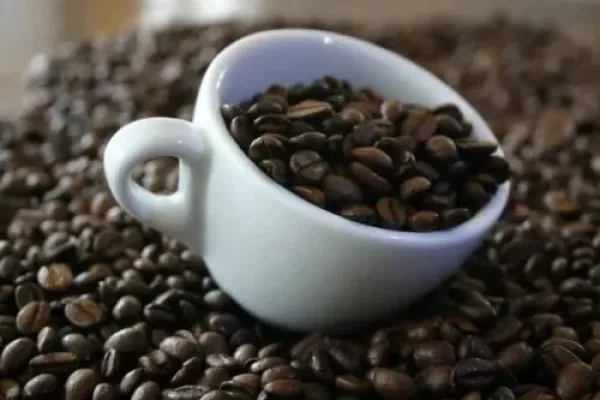One of the first casualties of the recession was desserts, as customers either couldn’t afford to buy – or felt they shouldn’t buy – the ultimate luxury ending to a night out. However, with price points falling in all regards, and consumer sentiment returning across Ireland, albeit gradually, what is in store for this sweet offering?
Many a restaurateur has commented over the past few years that wine and desserts have reduced greatly in popularity. Now, lets be clear, by ‘popularity’ we mean sales. For, desserts are, still, a desire of one and all. However, to combat the reduced consumer spending, menus in restaurants and hotels had to reflect this new, restricted, audience. So the first thing that happened was a cluster approach, set menus, early birds etc. Gradually, through initiatives such as lowering VAT on services, improving our service and offering better value for our fare, customers began returning to their routine of eating out – however at a far reduced level, it must be acknowledged. Now that customers have changed their mindset from those heady tiger-friendly days, they tend to act in a more cut-throat fashion, shopping around from one eatery to another, seeking out the most appealing meal they can find. So, variety is the best way to catch the eye.And with desserts, we all know, margins are very friendly. However, a surprising trend which has taken hold in Ireland, across in the UK and even in Europe, is the huge growth in the appearance of ‘coffee’ in the dessert menu. Again, a margin-friendly offering, but hardly in the spirit of good desserts, surely? What good places are now getting back to doing, however, is offering high quality, innovative and eye-catching choices. No longer just the ice cream, meringue and fruit offerings which gradually tire a customer down, lacking innovation, energy and wit. No, now we have entered a more audacious world, where consumers have access to better ideas, and therefore chefs are challenging themselves to keep their clientele entertained. Now, if it is to be served, ice cream has to be home made, and the customer will know the difference. Or, what about frozen yoghurt, and its final acceptance among Irish consumers? As the world becomes more health conscious, and the state pressurises our operators to greater clarify caloric contents on menus, this is clearly an avenue worth investigating. Ice cream is engrained in our psyche as an Irish foodstuff since we were kids, but times have changed. Frozen yoghurt can offer a far more acute flavouring, and a more eye-catching inclusion onto your menu.
Seasonal Changes
Or how about seasonal changes? Main courses change very regularly, as different vegetables come in and out of season. But, ignoring the usual change of fresh berries to frozen, what other effort is made. Halloween is oh so near, so a pumpkin custard could be in order. Everyone likes custard, but not everyone has even tasted pumpkin in Ireland. On a trip to the US a few years ago, Hospitality Ireland encountered a myriad of pumpkin dishes that ticked all the boxes. Seasonal? Check. Topical? Check. Tasty? Check. Praline pumpkin torte, pumpkin pie with homemade ice cream or frozen yoghurt, or even just a standard pumpkin pie; you won’t please everyone with these, but the variety and time-sensitive nature of such inclusions on your menu can greatly appeal to your customers.
Sweet Like Chocolate
Or take chocolate. We can’t talk desserts without talking chocolate, and who else but Barry Callebaut. The Barry Callebaut Chocolate Academy in Banbury in the UK is where the historic brand teaches pastry chefs from all over the UK and Ireland to better understand what is behind making your own chocolate. With Barry Callebaut, you’re talking about a history of over 150 years in the world of cocoa and chocolate. Its first steps into the processing and production of high quality chocolates have grown into a world of knowledge about cocoa and chocolate. To meet the growing demand for information more easily, Barry Callebaut has concentrated all of its knowledge into research and training centers: the Barry Callebaut Chocolate Academies. Run by Beverley Dunkley, the Academy has seen a huge increase in interest in recent years.“There has been a massive increase in interest,” says Beverley. “Young people in particular want to learn about chocolate, young chefs. They might not have seen a career in chocolate, perhaps thinking of it just as a strand of cheffing, but now its different. On TV there is a lot of pastry shows, chocolate is far bigger now. And customers are more aware too; after watching a show on TV they then greater appreciate when the chocolate is made at the place they are eating.”
TV Changes Our Attitudes
This is certainly true, the interest in chocolate nowadays, on the back of shows like Masterchef, Great British Menu, Great British Bake Off, as well as the continued rise in TV chefs both in Ireland and abroad means that awareness among the public is at an all time high. And thus, chefs are looking for new ways to innovate. “Considering there is a recession, we are doing very well here. The margin in desserts is good. And chefs need to get new ideas, which is what is good about our courses. Most of the people who come here to learn come from 3 star or 4 star hotels. Not the highest end, but places where the chefs still want to improve, learn and get better. We teach them how to do showpieces, making chocolate, tempering and plated desserts. Everything that is relevant.” Everyone who attends the Academy gets value for money, as the classes usually run over by a few hours because they go so well. And people come back, time and again. One particular attendee has returned to seven different classes – there is always a different tutor on so there is always more to learn. “Myself and Julie Sharp teach about 50 per cent of the classes, and we have ambassadors from all over the world who can help. We have 11 ambassadors in the UK and Ireland, Dirk Shonkeren is the Irish Ambassador. So they would all come over and teach, as would ones all over Europe.” It is clear that our customers have changed, so it’s a no-brainer to shake up the menu; after all, chefs are supposed to set the trend, not react to it.
Seasonal Pumpkin Pie Recipe
Ingredients 1/2 cup butter, softened 1/2 cup brown sugar 1 cup all-purpose flour 1/2 cup rolled oats 2 eggs 3/4 cup white sugar 1 (15 ounce) can pumpkin 1 (12 fluid ounce) can evaporated milk 1/2 teaspoon salt 1 teaspoon ground cinnamon 1/2 teaspoon ground ginger 1/4 teaspoon ground cloves
PreparationPreheat oven to 350 degrees F (175 degrees C).In a medium bowl, cream together butter and brown sugar. Mix in flour. Fold in oats. Press into a 9x13 inch baking dish.Bake in preheated oven 15 minutes, until set.In a large bowl, beat eggs with white sugar. Beat in pumpkin and evaporated milk. Mix in salt, cinnamon, ginger and cloves. Pour over baked crust.Bake in preheated oven 20 minutes, until set. Let cool before cutting into squares.









